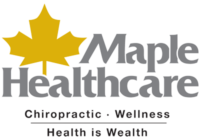How Myofascial Release Therapy (MRT) Eases And Relieves Pain
Muscular pain can affect anyone of any age, and some people live with the condition every day. Tight, painful muscle tissue can lead to restrictions of movement or misalignment in the body’s natural motion and postures, which can cause favoring of one side of the body or a sensation of excessive pressure, as well as pain in other areas of the body—including severe headaches.
This deep soreness in the body’s muscular and connective tissue is called myofascial pain—and it can be caused when the tissue is damaged at a “trigger point” where muscle fibers have tightly contracted, or when the connective tissue knots together abnormally, causing “adhesions.” It can also be brought on by emotional stress, manifesting as muscular pain.
Relief of this affliction can be found in myofascial release therapy, also known as MRT. This is a treatment used in muscle therapy that is significantly different to massage. MRT practitioners locate stiff and tightened areas and ease the tension through a combination of pressing and stretching. The technique, which is generally more effective than massage, focuses primarily on the fascia, which is a form of strong connective tissue that is thin and elastic. This tissue surrounds many internal body structures, including our muscles.
How does muscle pain and tension affect us?
Without proper myofascial release therapy, sufferers from muscle pain can experience fatigue and discomfort and feel a sense of weakness in their muscles. These symptoms will give rise to a general lack of movement that can cause the pain to spread to surrounding joints and areas. They’re particularly acute when the muscle tissue is bound down by regions of tight fascia.
Everyone is at risk of suffering from myofascial pain and tension, but the two most common groups of people are those who work in an office environment—who tend to underuse their muscles and maintain awkward positions for long periods while working—as well as professional athletes, who tend to overuse their muscles during intense practice sessions. These are the people who most stand to benefit from myofascial release therapy.
Pain relief through myofascial release therapy
MRT takes place during a muscle therapy or sport massage. The therapist will focus closely on the muscle areas that are the source of the pain, which will feel stiff and less flexible—even if sometimes these are not the areas where the pain is felt most acutely. Myofascial release therapy techniques isolate fascial tension in particular, releasing it through gentle and sustained pressure.
While the technique is not as gentle as sport massage or muscle therapy, the pressure is not uncomfortable and provides a cumulative and therapeutic sense of relief. In the course of the myofascial release therapy session, light manual pressure is applied to coax the muscle tissue to release its tension and restore the natural suppleness of the muscle fiber. With a focus on the release of muscular shortness and tightness, the fascia is loosened and stretched, allowing contiguous structures to move more freely. This has the effect of releasing the pain and restoring a comfortable range of motion.
The treatment, which can take between 30 minutes and an hour, is a particularly effective therapy among patients with chronic myofascial pain, as well as those who experience the typical related headaches, especially when applied to the tight fascial tissue in and around the neck area. The therapy is performed by licensed physiotherapists and doctors, not massage therapists. It is specialty work done by trained professionals working on specific problems that are too complex to be resolved through regular massage.
The muscle therapy isn’t applied in a single session only, but rather in a regular series of sessions that gradually serve to release the tension and restore proper balance in the tissue. Through repeat visits, the muscles are gradually eased into their natural state and the root cause of the pain slowly disappears.
What are the benefits of myofascial release therapy?
From the neck to the feet, the relieving techniques exercised in myofascial release therapy can restore comfort to many areas of the body. These include in particular the shoulders and arms, the head itself and the jaws, the lower back and hips, and the quad and calf muscles in the legs.
Myofascial release therapy can help to improve your range of motion and reduce soreness throughout the body, and in cases of tissue damage can help in the body’s natural healing and recovery process.
Beyond these specific benefits derived from sport massage and muscle therapy, MRT can help release tension, knots and even stress, helping the body to achieve better overall relaxation and release. It also has the added benefit of improving circulation—especially important with patients suffering from venous insufficiency, where blood can pool and damage the system of veins in the legs.
Why should I choose MRT?
MRT can be a valuable tool to enhance your chiropractic treatment. Taken daily or every few days, it can get you back in the game faster than you might otherwise expect—whether that be on the sports field or back in the office, whether you’re working at home or in more traditional working locations.
If you’re seeking to enjoy the benefits of myofascial release therapy, Maple Healthcare offers a full therapeutic treatment with chiropractic & MRT performed by a team of well-trained professionals, helping you to swiftly recover from pain.
Read more:
MAPLE INTERNATIONAL CO., LTD
Phone: 0705 100 100
Tax code: 0311948301
Date Range: 21 - 08 - 2012
Issued: Department of Planning and Investment of Ho Chi Minh City












